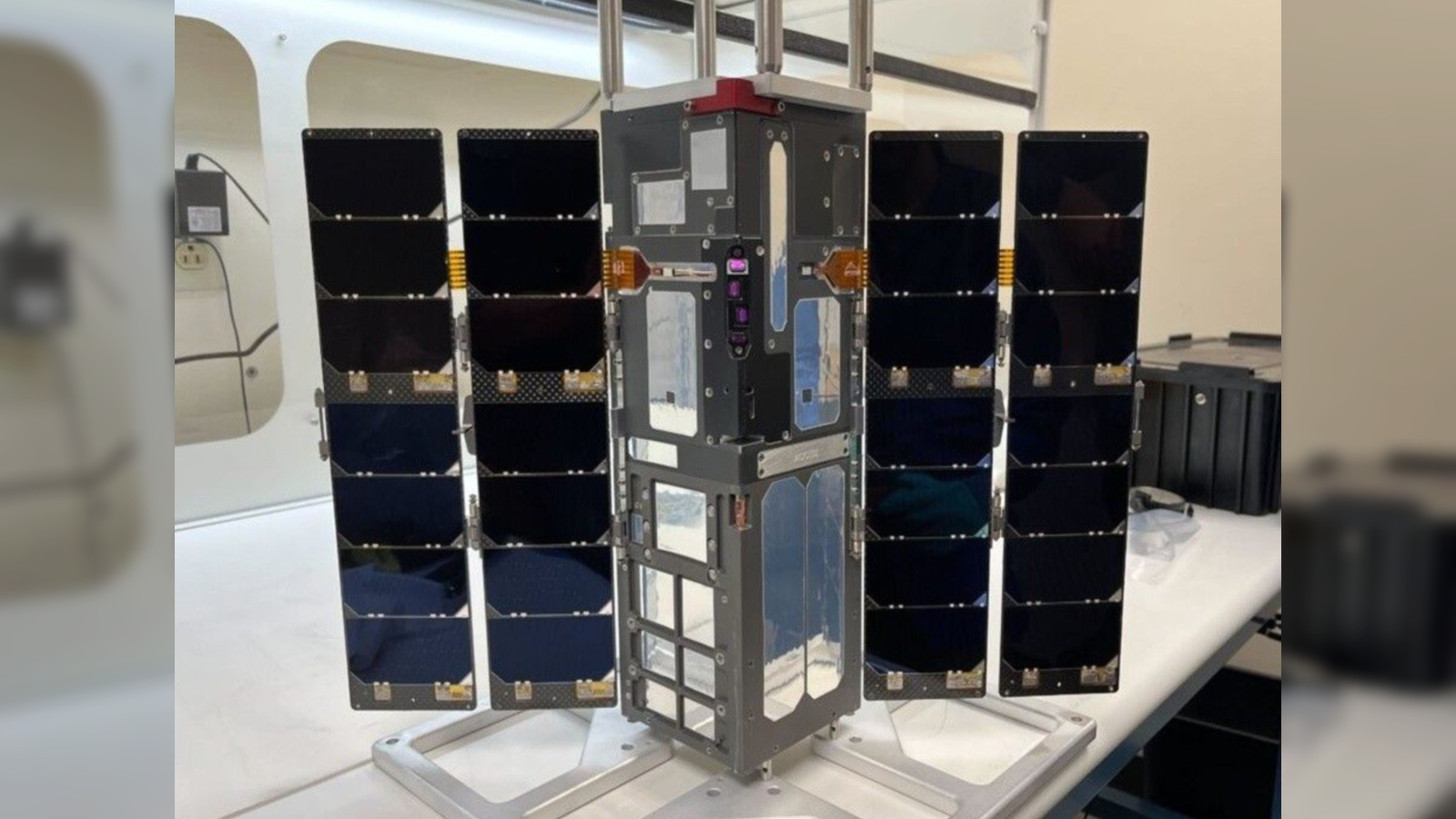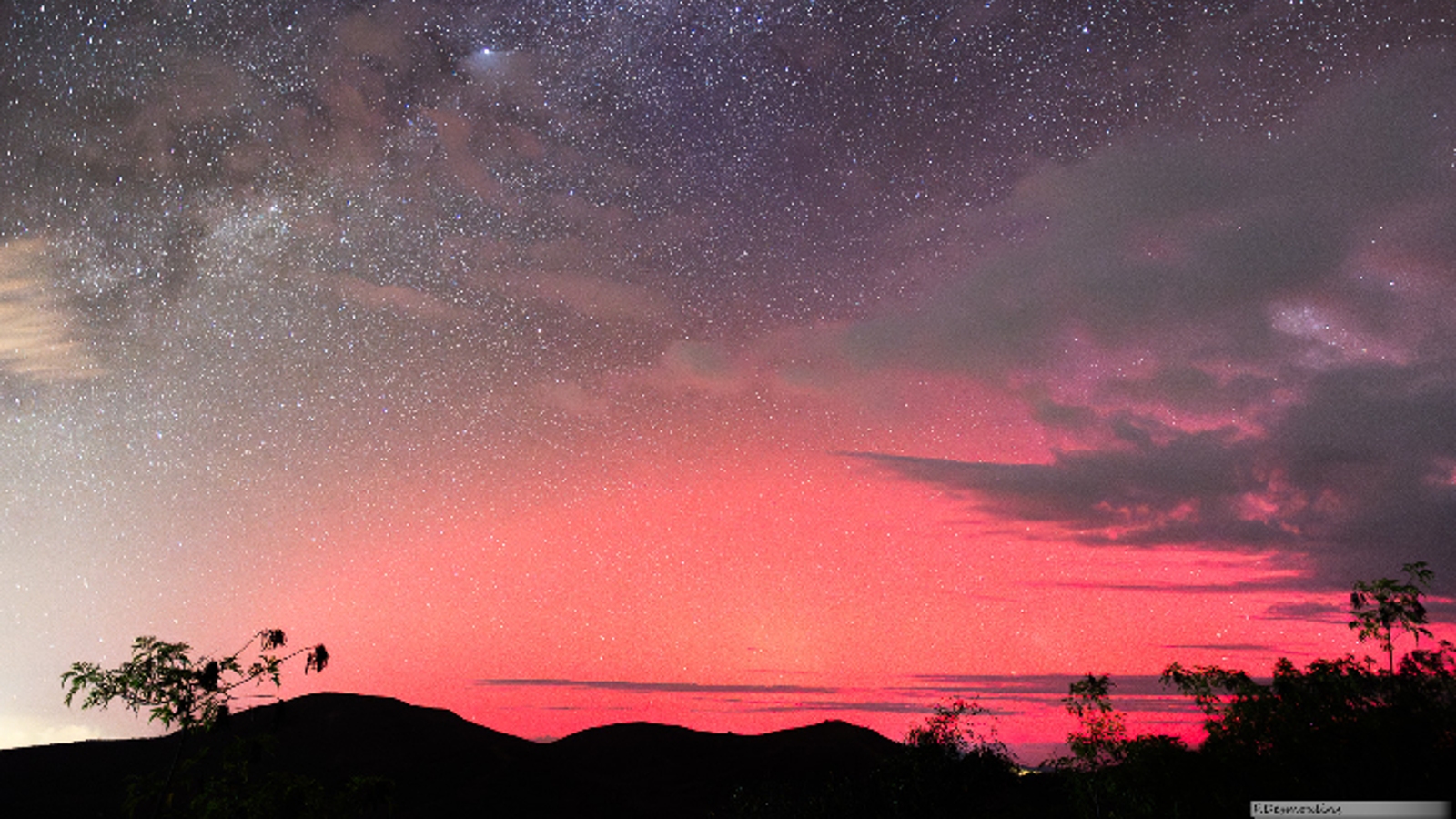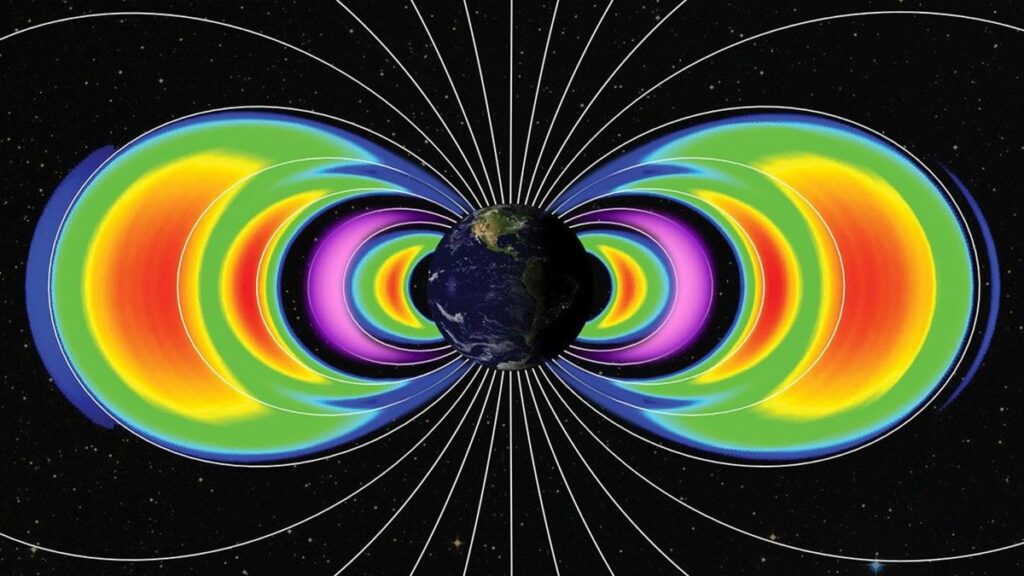Earth grew a pair of extra “radiation belts” after a supercharged solar storm rocked our planet’s magnetic field last year, data from a resurrected NASA spacecraft reveal. And one of the invisible bands, which is unlike any similar structure seen before, might still be there.
In May 2024, Earth was hit with its biggest geomagnetic storm in 21 years after a barrage of solar storms slammed into our planet, disrupting the magnetosphere and painting some of the most widespread aurora displays in the last 500 years. The geomagnetic disturbance also caused GPS-reliant machinery to malfunction.
In a new study published Feb. 6 in the Journal of Geophysical Research: Space Physics, researchers analyzed new data collected by NASA’s Colorado Inner Radiation Belt Experiment (CIRBE) satellite and discovered that two temporary radiation belts also emerged around our planet following the storms. The belts were created when charged particles from the solar outbursts became trapped by Earth’s magnetic field.
These bands are similar to the Van Allen belts — a pair of permanent donut-shaped radiation belts that extend up to 36,000 miles (58,000 kilometers) from Earth’s surface and help to shield our planet from solar wind and cosmic rays. The two new bands settled in the space between the inner Van Allen belt and the outer Van Allen belt.
Like the permanent structures, the outermost of the two temporary bands contained mostly electrons, whizzing around at near-light speed. However, the innermost temporary belt contained a surprising number of protons, which has never been seen in other temporary radiation belts before, researchers wrote.
Related: 10 supercharged solar storms that blew us away in 2024

“When we compared the data from before and after the storm, I said, ‘Wow, this is something really new,'” study lead author Xinlin Li, a space physicist and aerospace engineer at the University of Colorado Boulder, said in a NASA statement. The configuration of the proton belt was “really stunning,” he added.
The CIRBE satellite was offline during May’s superstorm, after malfunctioning in mid-April last year. However, on June 15, 2024, the spacecraft suddenly sprang back to life and resumed taking measurements. The breadbox-sized spacecraft, known as a CubeSat, was equipped with a unique device that could detect specific particles within the Van Allen belts. If it had never come back online, the researchers would not have discovered the new proton belt, the team noted.
It “wasn’t visible in the data from other spacecraft,” Li said. “We are very proud that our very small CubeSat made such a discovery.”

CIRBE continued to take measurements of the new belts until October 2024 when subsequent solar storms caused it to fall out of orbit and burn up in Earth’s atmosphere, NASA representatives said in the statement.
‘Likely still there’
Temporary radiation belts are nothing new. After major solar storms, charged particles often get temporarily trapped between the Van Allen belts for a few weeks. However, the newest additions to Earth’s radiation shield have survived much longer than most, likely due to the intensity of May’s solar storm.
The outer electron belt disappeared around three months after the storm, following further bombardment from a major solar storm in June and another in August, the researchers wrote.
However, the inner proton belt has proved to be much more resilient and “is likely still there today,” NASA representatives wrote. But it is hard to tell for sure without CIRBE.
It is currently unclear why the inner belt has held on for so long. It could be because of its unique configuration or be tied to the increased number of solar storms during solar maximum — the most active phase of the sun’s roughly 11-year solar cycle, which officially began earlier last year.
